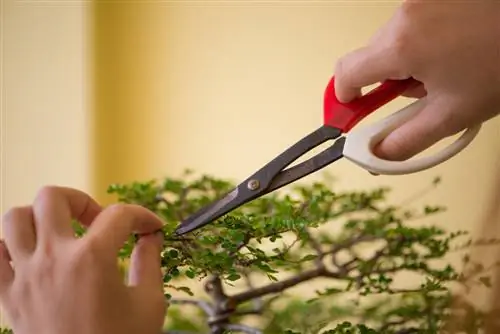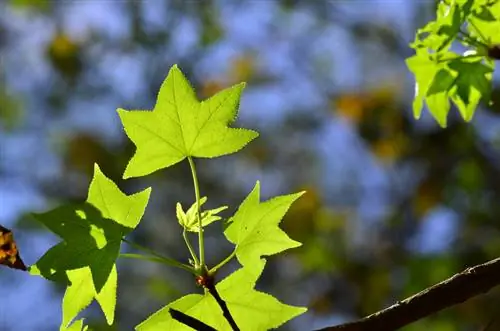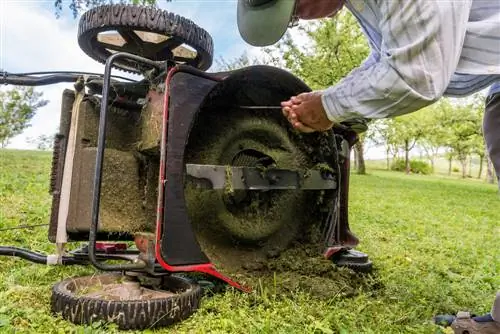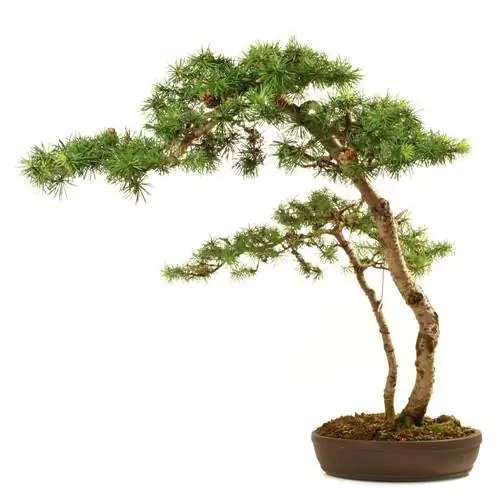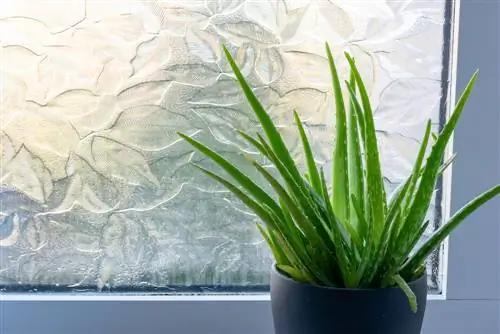- Author admin [email protected].
- Public 2023-12-16 16:46.
- Last modified 2025-01-23 11:21.
Anyone who grows a bonsai from a local tree must pay attention to meticulous care. This forms the essential basis for a he althy tree and allows the bonsai to develop its full splendor.
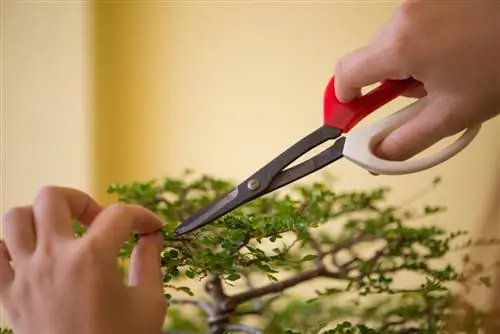
How do I properly care for a bonsai tree?
When caring for a bonsai tree, winter protection, regular watering, fertilizing, repotting and cutting are crucial. Ensure appropriate protection in winter, provide the tree with water daily and add organic fertilizer regularly. Repotting and cutting promote he althy growth.
Winter protection
Some type of winter protection is necessary for most bonsai. This varies from tree species to tree species and depends primarily on the severity of the winters in your region. Under no circumstances should outdoor bonsai be brought into heated rooms, as this will break their hibernation and cause them to rot. Instead, the trees must be protected from frost and wind, but should overwinter with maximum light. It is often sufficient to isolate the shell and roots, for example by burying the shell in the open ground or in a bed of pine needles or similar material. A well-ventilated greenhouse or a cold winter garden are also good wintering options.
Pouring
Bonsais die more often from incorrect watering than from any other reason. Because of the relatively shallow bowls for bonsai, the roots dry out much more quickly than in the open field. Watering is usually required daily during spring, summer and winter. In winter, watering is reduced because the trees need much less water during the rest period. The earth must not dry out.
Fertilize
Bonsai can only develop with regular fertilization. Prefer organic fertilizer (€8.00 on Amazon), which is available as powder, granules and in small chunks and balls. The granules in particular are recommended, especially because they are easy to see on the ground and you can therefore tell when a new dose is due. Inorganic fertilizer works quickly, making it difficult to judge how much has actually been absorbed by the plant.
Repotting
After a period of growth, the roots completely fill the bowl. A normal potted plant would now be transplanted into a larger pot where it has more space for new root growth. The reason for repotting a bonsai is the same, just the method is different. After root pruning creates new space for fresh soil and new root growth, the tree is planted back into the same bowl.
Cutting
The care cut maintains the existing shape of the bonsai and makes it possible to continually improve and refine its shape. Plucking back with your fingers and cutting back the first growth encourages a second growth to grow closer to the twig or branch, which in turn results in bushier and fuller foliage.
Tip
Bonsai can be grown in many ways, such as through seeds, propagation from cuttings, moss removal, sinking or grafting.

